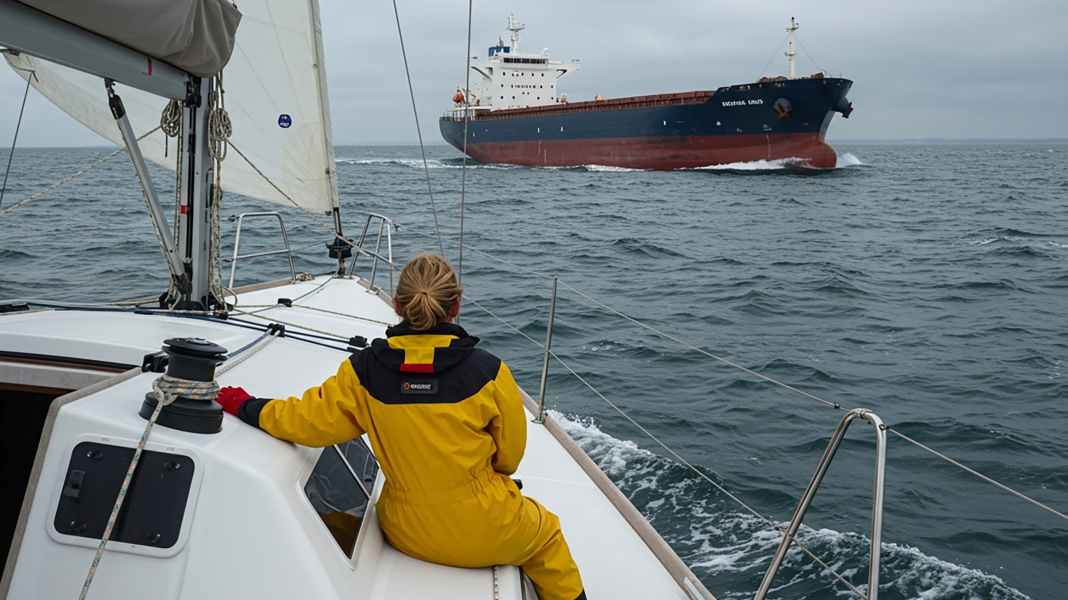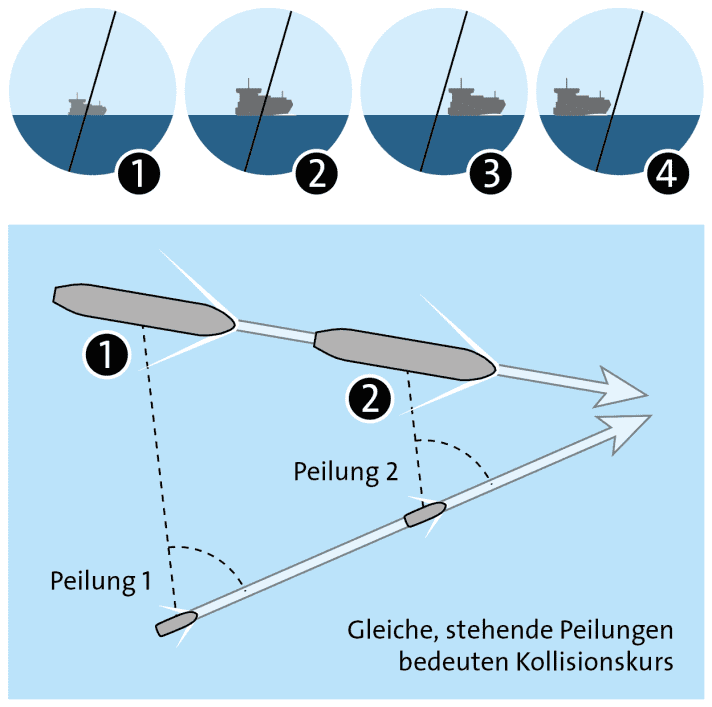Practice: Standing bearing - when there is a risk of collision and how to react correctly
Christian Tiedt
· 05.11.2025

When there is a risk of collision
Sighting a vessel at sea usually means approaching each other. It must therefore be clarified immediately whether you are also on a collision course with the other vessel. The illustration shows how to recognise this:

First take a bearing of the approaching vessel via the frame of a window pane or one of the shrouds (Fig. 1). Some time later, the bearing is repeated. If it now appears (Fig. 2), the bearing is correct. You are on a collision course with the sighted vessel and must take action.
However, if repeated bearings show Fig. 3 or Fig. 4 , there is no danger. In the first case the other vessel will pass ahead, in the second case astern. In both cases the bearing will move out, it will not remain stationary. Caution is still required, however, as the other vessel could change speed or course at any time.
How to react correctly
As long as you are still in the distance range of each other, there are two correct methods to run away from a recognised collision course and thus avert the danger of a collision: Changing speed and changing course.
Changing speed: If you reduce your own speed, you will pass safely behind the rear of the vehicle you see. On the other hand, it would be wrong to increase your speed - you would run directly in front of the other vehicle.
Recognising a potentially dangerous situation at an early stage makes it easy to make the necessary adjustments. Especially for a pleasure craft. The shorter the distance, the shorter the reaction time and the less room there is to manoeuvre. So you should never let it get to the point where a last-minute manoeuvre might become necessary.
- More practical tips in a space-saving format for your trousers can be found in the "YACHT logbook" by Hans Donat, published by Delius Klasing Verlag.
Also interesting: Traffic separation schemes - one-way routes for safety
